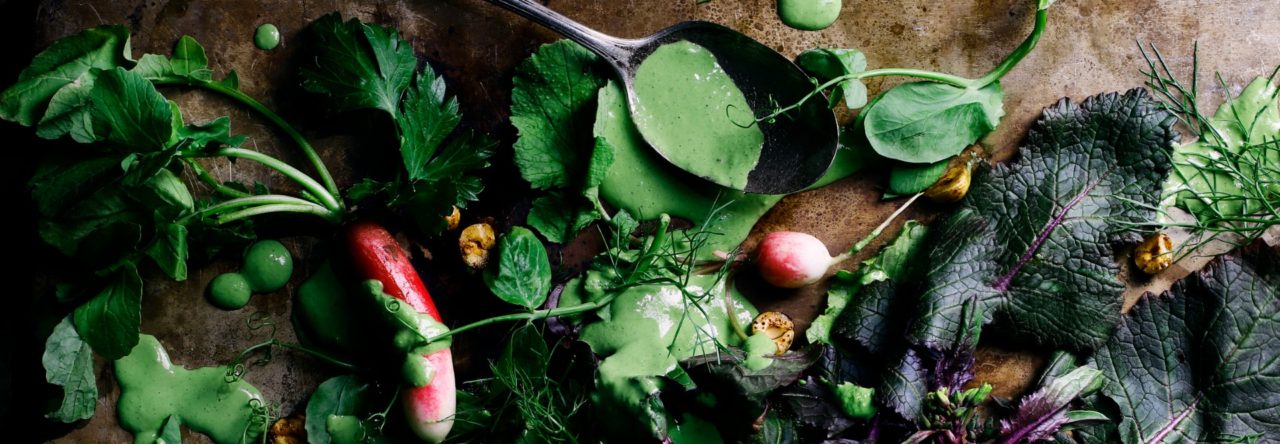Arepas, Venezuelan corn tortillas
makes 6 arepas
From Viva Vegan!, my vegan latin american opus comes a guide to making arepas, the native corn-based “tortilla” of Venezuela and Colombia. While made from corn, arepas differ greatly from Mexican tortillas in that they can only be made from masarepa flour, a special pre-cooked, finely textured cornmeal and nothing else will do (including Mexican masa harina flour). Look for a corn meal product labeled “masarepa” or “for arepas” and made in Venezuela or Colombia when in doubt; it’s made from corn kernels that have been cooked, dried and pounded into a very fine meal. Once mixed with warm water it instantly plumps up into a dense and fluffy dough.
So what is an arepa exactly? It’s a dense, firm, plump little cake (far thicker than tortillas) with a crunchy and chewy crust and a soft and tender interior. The best arepas have a few nice dark char marks on them; cooking first in a cast iron pan then briefly baking in the oven creates good results. Arepas are ideal for splitting almost open, like pita bread, and stuffing full of tasty ingredients for sandwiches.
2 cups white or yellow Venezuelan/Colombian “masarepa” pre-cooked fine cornmeal
1/2 teaspoon salt
2 1/4 cups of warm water
small amount of vegetable oil (use a high smoking point oil like refined canola) for grilling
1. Preheat a cast iron griddle or other thick-bottom skillet over medium high heat. Lightly brush with vegetable oil. Preheat oven to 350 degrees and have ready a baking sheet. Griddle is ready to use when a drop of water dropped onto it’s surface sizzle loudly. In a large bowl combine masa harina flour and salt. Form a well in the center of the flour and pour in the warm water. Use your hand to mix the water into the flour to form a soft mass, then knead with your fingers, eliminating any hard lumps and creating a moist dough. Dough should have the consistency of soft mashed potatoes. If dough seems much too stiff dribble in a little extra water.
2. Separate dough into six equally sized portions and roll into balls. Place a ball in your palm and with gentle yet firm patting motions begin pressing down and out your arepa. Use your palms to occasionally press the disc flat just a little, then use the pads of your fingers to shape and press outwards the edges of your arepa. Do a little of this motion all at once AND incrementally turn the arepa in your palms a little bit at a time to work on the edges and shape into a disc about 3 1/2 to 4 inches wide by 1 1/4 inches thick.
3. Gently place 2 to 3 arepas into preheated, oiled griddle, leaving enough room so that they can be easily flipped. Place remaining shapely new arepas onto a cutting board and cover with either a damp, clean kitchen towel or plastic wrap while the other arepas cook.
Cook each arepa for about 8-10 minutes on each side to form a crust, flipping just once. Some dark, browned spots are ideal. If desired try cooking arepas on a well-greased preheated grill pan, grilling each side for about 10-12 minutes or until nice browned grill marks are created. In theory you can serve arepas like this, but for the crunchy crust place on a lightly greased baking sheet and bake them in the preheated oven for for 14-16 minutes, flipping half way through. Arepas are ready when they have a firm crust and sound almost hollow when tapped underneath.
Serve arepas immedeately or keep warm by loosely wrapping in foil. To fill an arepa slice horizontally about 3/4 of the way to form a “pocket”, perhaps removing a little of the doughy interior if you really want to pack it in. Arepas should be eaten hot as they tend to toughen up when they get cool. Reheat arepas by grilling again, or warming in the microwave for 30 seconds and then slapping on the grill if you want the interior very hot and the crust re-crisped.








